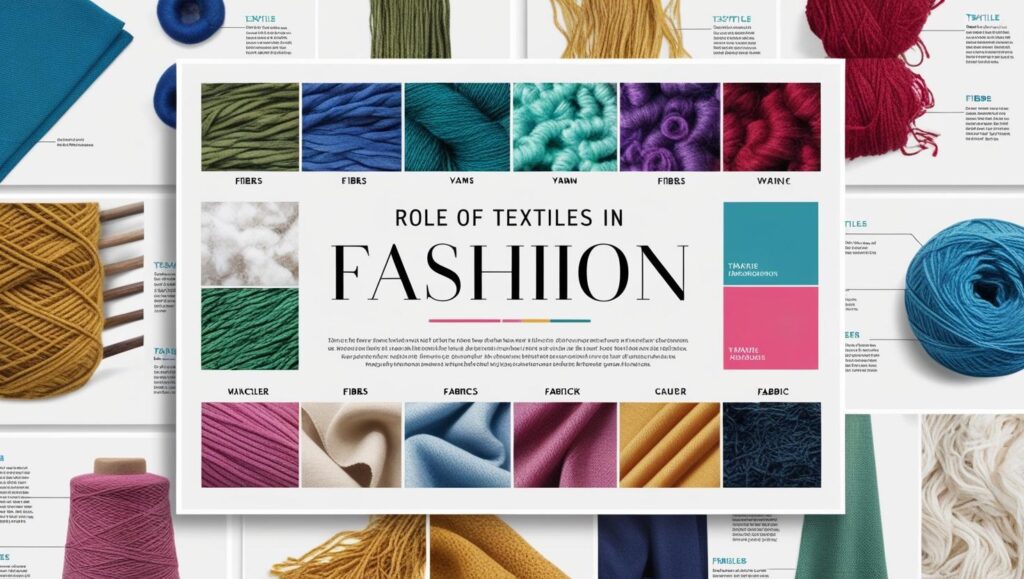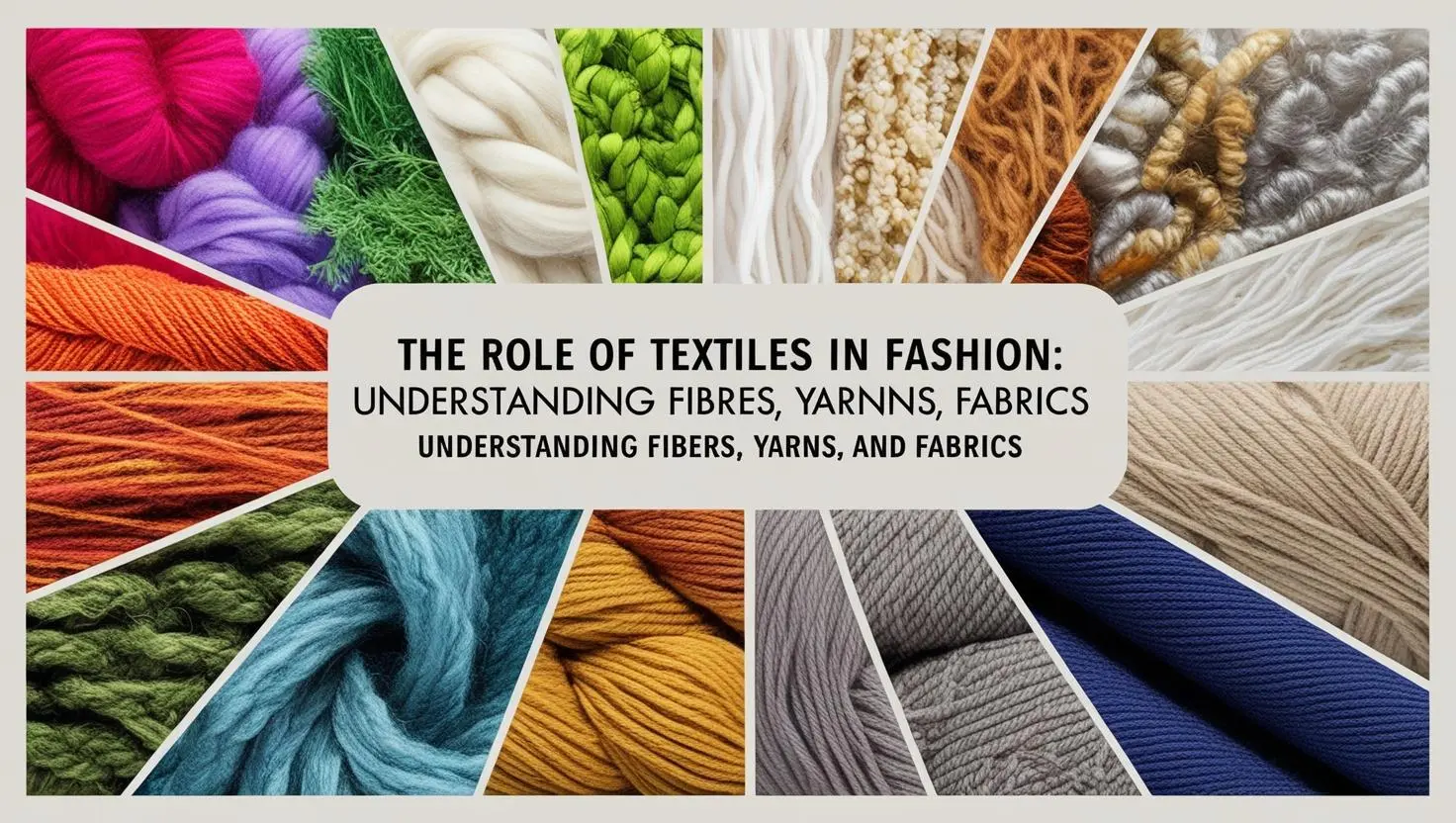Fashion is so much more than just patterns, colors, and styles; it actually starts with just the very materials a garment is made of. Knowing your textiles is the key to amazing-looking fashion that’s comfortable and lasts, while being either a student of fashion or an amateur in the design world, the magic of fibers, yarns, and fabrics will surely elevate your designs to the next level.
Pursuing a Two Years Advance Certification in Fashion Design can deepen your understanding of textiles and their role in fashion. This certification will equip you with the knowledge to make informed choices about materials, ensuring that your designs are not only visually stunning but also practical and enduring.
Why do textiles act as the backbone in fashion design?
Or could it be the moment one thinks about fashion, he/she evokes beautiful fabrics draped over a model? Instead, are you interested in knowing what makes these textiles just so perfect? Well, textiles play the role of unsung heroes in the fashion world-which is mostly unappreciated for some glitz of patterns or for any latest runway trends. Without them, though, those trends just wouldn’t exist.
Every garment begins life as a raw material-usually fibers. Fibers are the fine, hair-like substances that make up any type of fabric in its simplest form. How those fibers are prepared into yarns, and those yarns are prepared into fabrics, then finished can totally change the nature of a design.
The type of fiber one chooses can be very important for a fashion designer to create an overall feel for a garment. Do you want a luxurious silk gown that floats across the floor in elegance, or are you envisioning a casual cotton T-shirt that drapes softly and breathes well? Your fiber choice affects more than just the texture; it will affect the appearance and the durability of the garment.

What are fibers, and why are they so important?
Well, fibers are the very smallest units of any kind of textile. They can range from natural fibers like cotton, wool, and silk to synthetic fibers like polyester and nylon. Each of them has different characteristics which will surely affect everything, from durability to comfort.
For instance, cotton is soft, airy, and comes from the white, fluff fibers of cotton plants; thus, it is ideal for casual wear. Wool is a natural protein fiber that, of all properties, keeps you warm and holds insulation; it is thus meant to be put on during adverse cold weather conditions. As a budding designer, the unique qualities of different fibers will help you understand how to select the best material for your designs.
Another influential factor for the sustainability of your work will be between natural and synthetic fibers. More and more designers nowadays work with sustainable fabrics, using organic cotton and/or innovative alternative materials that reduce the environmental impact of fashion productions.
How Do Yarns Turn Fibres into Fabric?
Now that you know about fibers, let me come to yarns. When the fibers are spun together, they become yarns. The twist in these fibers imparts strength and flexibility to the yarn so that it is strong enough to make fabric.
Think of yarns as threads of opportunity. The texture and weight, but even the elasticity of the yarn, can change how your fabric behaves. A thick bulky yarn will produce a warm, cozy fabric in which to make up sweaters and outerwear, while a fine, thin yarn could produce a smooth, light fabric from which formal dresses are made.
The art has transformed a lot and is still evolving with every new technique to produce a specialty texture or special finish. Thus, as designers, one really has the immense scope of working with yarns- starting from flat yarn to boucle/novelty-to give fabrics so that the imagined creations can have life.
Specialness of Fabric in Fashion :
Fabric is the actual material that gives shape to a design and is obtained by weaving, knitting, or bonding yarns together. Fabrics are where all your hard work with fibers and yarns culminates into something tangible. Each fabric type has a set of characteristics related to drape, texture, and durability, which may differ and influence the overall look of your fashion piece.
Take, for instance, soft velvet. Its rich texture and weight make the fabric perfect for evening wear, adding an added touch of luxuriousness to your designs. On the other end of the scale, a light linen fabric will be breezy and casual, perfect for summer styles. The feel of the fabric against skin, the movement, and its durability over time are just key considerations when it comes to garment design.
As a fashion designer, knowledge in working with different fabrics empowers you with the license to play with different textures, weights, and finishes. Be it classic denim or the newest trends in sustainable materials, textiles are your canvas.

How Can You Experiment with Textiles in Your Designs?
Having learned the building blocks of textiles-fibers, yarns, and fabrics-it is now time to play. Do not be afraid to mix and match any two or more interesting materials together. A structured wool-blend coat lined with soft silk, a flowy cotton dress with delicate lace accents adds depth and dimension to your work.
As you start creating, notice how each different textile choice adds to the appearance of your finished product. Does the fabric drape as it should? Does the yarn produce the desired texture? Paying attention to these details will help you even further in perfecting your designs and exploring newer dimensions of creativity.
Include sustainable textiles in your collections. Although ecological fashion is on demand, the experimentation with organic fibers and recycled fabrics will give a field for innovation and will make a difference in the fashion industry.
Conclusion: How Will You Bring Textiles to Life in Your Fashion?
It can be felt-from the silky caress of cotton on one’s skin, right down to the intricate weaving in a scarf of woolen nature. To gain insight on the same, it is important to note that what constitutes a textile in reality is an understanding of fibers, yarns, and fabrics. May every choice involving textiles in my journey to remain a fashion designer make ordinary designs look miraculous.


